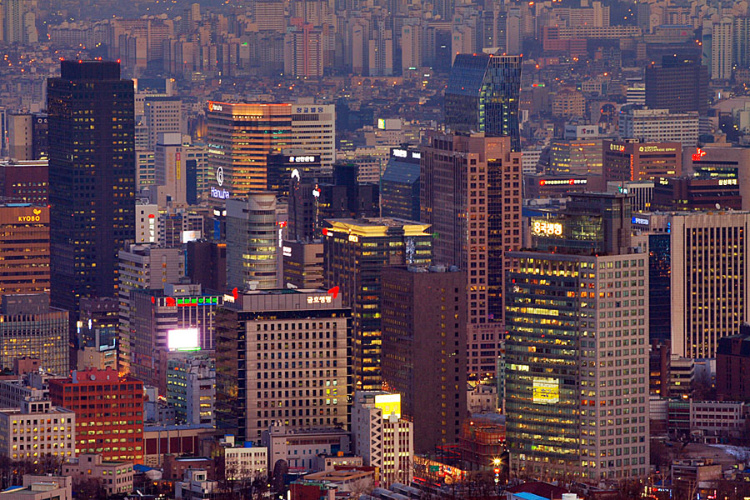Key Money

Let’s say you wanted to rent an apartment, maybe a two-bedroom. In most places, you’d be expected to put down three or four months’ rent as a deposit, covering your first and last months’ in your new apartment plus a security deposit in case you trash the place during your year or two as a tenant. In some places, that can end up being a huge sum of money. In New York City, for example, that two-bedroom could run you $5,000 a month easily, so just to get your name on the lease means forking over a $15,000 to $20,000 deposit.
But that’s nothing compared to money you have to put down to rent many if not most apartments in South Korea, where deposits equivalent to $200,000 to $400,000 are common.
South Korea doesn’t have a rental system like most places (although parts of Iran and Bolivia employ somewhat similar methods). Home ownership is “not popular,” in the words of the Guardian, and real estate is often owned by those whose families have controlled the underlying land for generations. Most properties were (and are) rental properties, but for reasons unclear, the western-style rental agreement didn’t take hold there. Instead, there’s something called “joense” (pronounced something like “cheun-say”), or “key money.” Renters give a large, lump-sum deposit to their landlords, often totaling as much as 60% to 80% of the apartment’s purchase price outright — and therefore, amounts often equivalent to hundreds of thousands of dollars. In exchange for the deposit, renters are afforded the right to live in the apartment for the term of the lease, which is often only two or three years.
If that sounds like a terrible deal for the renter, don’t worry — their part gets better. The lump-sum deposit isn’t a payment but an interest-free loan. The landlord can invest the money any way he or she wishes during that period, and in periods where one can get a 20% return on capital, that’s a huge win. At the end of the lease, though, the landlord must return the entire amount of the principal to the renter. (The loan is unsecured and creditor-renters often have little legal recourse against deadbeat debtor-landlords, so renters often will refuse to leave until their debt is repaid.) In effect, the renter lives for free, losing only the time value of his or her down payment.
In good times, it’s a great system for landlords and renters alike. The renters, assuming they’ve saved enough money, get to keep their savings while living rent free. Meanwhile, landlords are able to double-dip, earning great returns on the capital while their real estate also appreciates. Unfortunately for the Korean economy, that’s not the case right now. Interests rates are low and real estate values have flattened if not dipped, and landlords, therefore, are struggling to make money under the joense system. While switching to a rental model like that in the U.S. may seem like a good way out, for many, it’s not an option — the only way they can afford to repay their current tenants is to get a cash infusion from the next one.
Bonus Fact: At the equivalent of $300,000 or so, not every South Korean can get an apartment in the manner described above. So how does everyone else find a home? It varies, of course, but one option is a “goshiwon,” a tiny “sleep and study space” per Kotaku, originally designed for students. These super-small apartments (there’s a photo gallery at that Kotaku link) are only about 50 square feet (5 m^2) large but have a bed, desk, toilet, shower, and sometimes a kitchenette crammed inside the tiny space. At $300 or so a month, in recent years, they’ve become increasingly popular for non-students who are looking for privacy without breaking the bank.
From the Archives: South Korea’s Reverse Gold Rush: When times got tough, people… donated their gold.
Related: A book describing how to make money as a landlord “in any real estate market.” They probably weren’t including the joense one, though.
